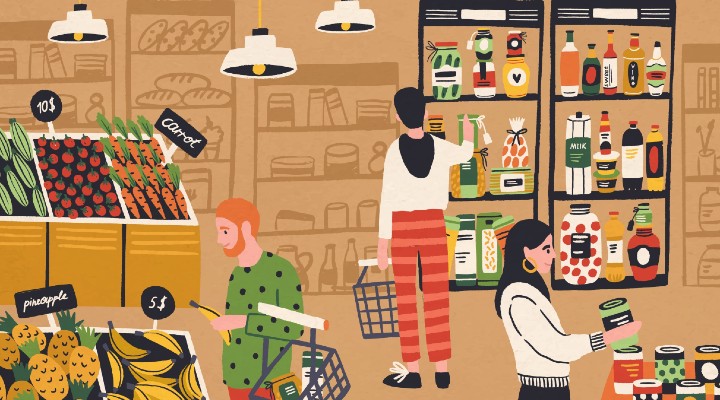Both globally and locally there is now significant progression of the development and implementation of sustainable packaging, as well as the focus on recycling/reusing of single-use packaging such as plastics already in the system. Australia currently contributes 1.9 million tonnes of packaging waste yearly, however with the government recently announcing the 2025 National Packaging Targets, there has already been great actions taken by retailers and manufacturers.
Food packaging, however, creates greater complexity for the development of these new sustainable options. Not only does packaging need to protect food integrity and avoid contamination of the food from production to plate, but given its close contact with the food, packaging options must adhere to additional regulations to ensure the food is safe to consume.
Countries have different regulations relating to the testing requirements of food packaging, and some countries don’t have regulations on topics that other countries do have. The US and Europe for example, have different testing requirements compared to here in Australia, and different requirements from each other! So importers and retailers need to be mindful of the specific Australian regulations and guidelines to ensure compliance.
Let’s look more closely at some areas relating to sustainable food packaging:
Compostable Packaging
In Australia, compostable packaging is fast gaining interest and uptake, however is still only accounting for around 0.1% of plastic packaging in the market. For packaging to be certified compostable it must meet certain requirements to ensure no contamination of normal organic recycling processes.
For an item to be considered ‘compostable’ it must be certified to the Australian Standard AS 4736:2006. These tests ensure that the product can be treated on an industrial and commercial scale with the kerbside collected organics. Verification that a compostable plastic meets the Australian Industrial Composting Standard is provided by the Australasian Bioplastics Association (ABA) following testing by an independent accredited laboratory.
The APCO (Australian Packaging Covenant Organisation) recently put out a fantastic reference document for businesses wanting to understand more about compostable plastic packaging. It is a must read for any retailers and manufacturers of plastics or food interested in developing, using or selling products with compostable packaging claims.
Microplastics
The topic of microplastics has also been gaining momentum globally and locally in recent times. Microplastics are defined as tiny pieces of plastic that are less than 5 mm in length. Primary microplastics are small to begin with, such as microbeads added to personal care products. Secondary microplastics start off as larger plastic items such as plastic bags, and degrade into microplastic particles over time.
CSIRO, Australia’s national science agency, has provided the first ever global estimate for microplastics on the seafloor, with results suggesting there are 14 million tonnes in the deep ocean. This is more than double the amount of plastic pollution estimated to be on the ocean’s surface. Microplastics have been not only detected in the ocean, but in wastewater, fresh water, food, air and drinking water. (World Health Organisation, 2019)
Microplastics can enter the food chain by aquatic animals who mistake these particles for food and ingest them, however there are also other ways. Studies have looked at their presence in bottled water, honey, organic fertilisers, plastic teabags, sea salt, and even baby formula and breast milk being fed to babies using plastic bottles.
An Australian study from the University of Newcastle suggests that the average person could be consuming about 5g of microplastics every week, which is equivalent to a credit card!
There are laboratory tests that can be done on products to understand both the size and chemical identity, and organisations such as FSANZ (Food Standards Australia and New Zealand) are constantly monitoring developments on this issue and how it is affecting the food chain and ultimately consumers.
Food Packaging Safety & Contaminants Migration
Migration is the transfer of chemical substances from food contact materials into food. Whilst packaging is essential for the safe storage and transfer of food from production to plate, it is important to understand the direct impact it has on the food inside. In Australia, there are regulations in place that need to be adhered to, ensuring the safety of the food being consumed. FSANZ Food Standards Code (FSC) sets out requirements for food packaging materials, including maximum permitted levels of heavy metals, non-metal substances, and natural toxicants that may migrate from packaging to food. It also requires that substances used in packaging materials in contact with food must not pose any harm, distress, or discomfort to the human body. All food products covered by the FSC must be able to demonstrate that the above have been met.
Additionally, recycled and reused materials may be used for food packaging applications, provided they are suitable for the intended use and will not contaminate food as per above requirements, and consideration must be made regarding contamination of the source material and possible degradation of the recycled packaging.
Shelf–life Impacts
A large part of the sustainability topic when it comes to food includes food waste. Food waste costs the Australian economy around $20 billion each year. We waste around 7.3 million tonnes of food annually, equating to around one in five bags of groceries. Whilst there are many facets to this, one includes shelf-life of a food, ensuring the ‘best before’/’use-by’ dates are as accurate as possible to avoid unnecessary premature disposal of food, and effectively using innovations in packaging to increase the shelf-life of a product.
Changing any aspect of a food production process, including new packaging, ingredients, manufacturing processes, or storage conditions right along the supply chain, can impact the shelf-life.
Engaging in shelf-life studies through specialised laboratory tests can save retailers and manufacturers hundreds of thousands of dollars each year by maximising the product shelf-life, as well as making positive environmental impacts.
Together as one, the Australian food industry can work together to make more positive environmental impacts! There are many ways sustainable packaging can contribute to this, and with just a bit of understanding, it can be done whilst keeping food safe for the health of Australian consumers.
Mérieux NutriSciences’ global network has an extensive selection of packaging related services available, including compostability tests, migration and contaminate testing, shelf-life and microplastics testing. Our auditing and labelling teams can also assist with associated services! Contact us today at sales.au@mxns.com or call 1300 000 990 for more information.
Visit our website for more information at www.merieuxnutrisciences.com/au






